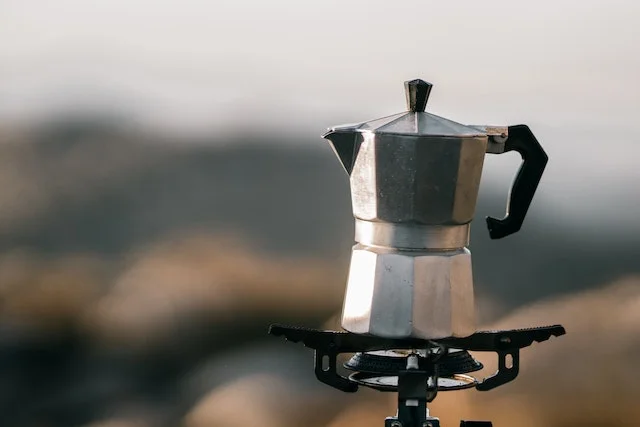Cafezinho: Unveiling the Rich History, Brewing Techniques, and Culture of Brazilian Coffee
Introduction to the Taste of Brazil
Cafezinho translates to “little coffee” in Portuguese, it refers to the strong, sweet coffee brewed and served constantly across Brazil. It plays a central role in social gatherings, family rituals, celebrations, and business meetings. The drink blends bold coffee taste with sugar, served in tiny demitasse cups known as xícaras. Carry on reading to learn about a drink that represents a custom that connects people and creates identity.
Key Takeaways
- Cultural Icon: Cafezinho, a sweet Brazilian coffee, is a cultural icon used in gatherings, rituals, and meetings, reflecting Brazilian identity.
- Traditional Brewing: Cafezinho is made from freshly roasted beans, finely ground and brewed traditionally for a rich, thick coffee.
- Social Catalyst: Cafezinho serves as a social catalyst, uniting Brazilians during conversations and bonding moments.
- Symbol of Brazil: Cafezinho is intricately tied to Brazilian identity and is spreading globally while adapting to local tastes.
Tracing the Origins of Cafezinho
To understand Cafezinho requires looking back at the history of coffee in Brazil. Coffee first arrived in 1727, when the Portuguese brought plants from French Guiana to northern Brazil. High altitudes and abundant rainfall created excellent growing conditions, especially in states like Minas Gerais, Sāo Paulo, and Paraná. Coffee rapidly spread across the country.
Brazil’s colonial past played a pivotal role in establishing large coffee plantations (fazendas) worked by African slaves. Coffee quickly became a massive export commodity that stimulated Brazil’s economy for centuries. The popularity of drinking coffee at home emerged in turn, with coffee an essential part of every family’s table.
The Art of Crafting the Perfect Cup
Part of the appeal lies in the care invested in its preparation. Many Brazilians still follow the traditional method of making Cafezinho. It starts with procuring high-quality, freshly roasted beans, often purchased from a local coffee shop.

A critical step is allowing the beans to rest before grinding, so flavors can emerge fully. The beans are then finely ground and placed in a cloth filter suspended over a simple metallic brewing pot called a mocha or filtro, a french press may also be used. Hot water between 185-205°F is slowly poured over the coffee bed, producing a concentrated extract.
The result is an intensely flavored coffee revered for its smooth, thick consistency. Brazilian beans like Bourbon Santos produce a brew with hints of chocolate and nuts. Freshness is vital – the coffee is consumed immediately after brewing.
The Role of Cafezinho in Brazilian Daily Life
Beyond the taste, Brazilian coffee is valued for its social significance in daily life. It’s often said that Cafezinho is “the drink that unites Brazilians.” Co-workers take regular breaks together over coffee, setting aside time to talk and reconnect. Friends and family also bond while sipping the drink during informal visits.

In many households, each day starts with everyone gathering to drink the first cup of Brazilian coffee. Parents often use the beverage to have heart-to-heart talks with children. The coffee thus functions as a “social lubricant” that brings people closer. The drink represents a time to converse, share news, and enjoy each other’s company.
Step-by-Step: Making Cafezinho
Equipment Required to Make Cafezinho
Authentic Cafezinho requires:
- Fresh Brazilian coffee beans
- Burr grinder for fine powdery grind
- Cloth filter
- Metallic brewing pot
- Hot filtered water (200°F)
Step-by-Step: Making the Perfect Cup
Follow the below steps to make the perfect brew if you want to try it at home:
- Choose quality beans: Select fresh, locally roasted Brazilian beans like Bourbon Santos. Many prefer a medium roast. Let the beans rest in a breathable bag for 4-6 hours after roasting before grinding.
- Grind finely: Use a burr grinder if possible for uniform grinding. The grounds should have a fine, powdery consistency similar to sugar. This allows thorough extraction.
- Add grounds to filter: Put 2 heaping tablespoons of grounds into a cloth filter or café coador suspended over your brewing pot. Gently shake to level the bed.
- Slowly pour hot water: Heat filtered water to about 200°F, just before boiling. Gradually pour water over the grounds in a circular motion.
- Extract full flavor: Let all the water filter through the grounds into the pot. Total brewing time should be about 4 minutes.
- Sweeten if desired: Add sugar to taste while coffee is hot – Brazilians often add 1-2 teaspoons per 3 oz cup. No need to stir.
- Serve and enjoy: Pour into small cups. Sip slowly and savor the rich, authentic taste!
Embracing Variations: Cafezinho Recipes
Once you master the basic method, try these delicious variations:
- Add a little sweetness: Add 1-2 teaspoons of white or brown sugar while it is hot. The sugar nicely offsets the coffee’s bitterness.
- Spiced iy up: Add a dash of ground cinnamon or clove to complement the baked notes. Nutmeg and anise also pair well.
- Turn the heat down: Make the brew extra strong, then pour over ice. Top with whipped cream for a cooling treat!
- Go nuts with it: Add 2 tablespoons of homemade almond milk for a nutty, creamy cup. Froth the milk first for a cappuccino-style drink.
The Cultural Significance of Cafezinho Rituals
The rituals around Cafezinho reveal its cultural value. It’s traditionally served in small 2-3 ounce cups with tiny spoons. Cafezinho is often enjoyed standing up, keeping conversations brief. Etiquette calls for cooling the coffee before sipping. Sharing Cafezinho fosters friendship and trust. Cafezinho solidified its role in family milestones and holidays, transmitting its significance.
Cafezinho and Brazilian Identity
Drinking Cafezinho is intricately linked to Brazilian identity. Its ubiquity in daily routines makes it an emblem of “Brazilianness.” This tight association inspired many artistic tributes to Cafezinho. For Brazilians, Cafezinho conjures nostalgia and reaffirms national pride. As author Paulo Coelho summarized: “Cafezinho belongs to our story as Brazilians.”

The Spread of Cafezinho Culture
As Brazilian communities spread internationally, they brought Cafezinho rituals along with them. Portuguese immigrants popularized Cafezinho in enclaves across the United States, from Hawaii to Massachusetts. In today’s globalized world, Brazilians frequently share the drink when traveling and living abroad.
Brazilian coffee drinks are also gaining interest as global coffee culture expands. More cafés outside Brazil are showcasing the traditional beverage on their menus to offer an authentic experience. Some specialty roasters now sell beans specifically for making the authentic Brazilian brew.
As it disseminates worldwide, Cafezinho is often adapted to local ingredients and tastes. For example, using lighter roasted beans results in fruitier notes that appeal to international palates. Spices like cardamom or vanilla sometimes season Cafezinho creatively. Such variations add new twists while retaining the drink’s essence.
Conclusion
Cafezinho imparts much more than caffeine – its taste encapsulates Brazil’s history and values. The drink represents generations-old traditions that unite families, friends, and communities. Sipping Cafezinho provides comfort and belonging. By embracing its rituals, anyone can connect profoundly with Brazil.
FAQs
What Makes Cafezinho Unique?
Its signature strengths come from Brazilian beans, bold concentrated brew, and cultural rituals.
Can I Use a Regular Coffee Maker to Make Cafezinho?
You can try, but pour-over is best to fully extract the robust flavor.
What are Some Cafezinho Variations?
Add spices, milk, or brew it over ice!








